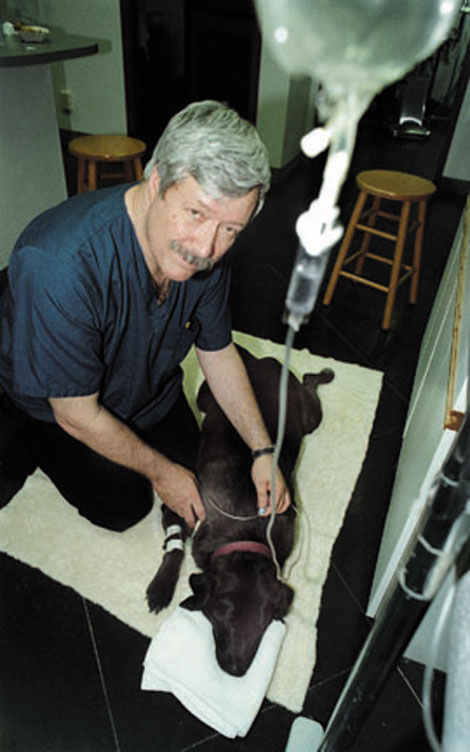Warning Issued After Dog's Deaths
The RCMP and a local veterinarian are warning people in the Hidden Valley subdivision to keep their dogs at home
By Whitehorse Star on April 15, 1999
From the Whitehorse Star, April 15, 1999
WARNINGS ISSUED AFTER DOGS' DEATHS
The RCMP and a local veterinarian are warning people in the Hidden Valley subdivision to keep their dogs at home, as three dogs seem to have eaten some chemicals or were deliberately poisoned in the last day or two.
Dr. Jim Kenyon said his Yukon Veterinary Services clinic received calls about three dogs Wednesday, suffering from full grand mal seizures.
One dog was brought in dead. The second one died shortly after coming into the clinic, and the third one, named Jessie, arrived at noon yesterday. All the dogs were Labrador-crosses.
"Jessie is still with us, she's not out of the woods by any means, but I call her at least stable at this point," Kenyon said at 11 o'clock this morning.
In addition to these three, a fourth dog in the subdivision off the Mayo Road disappeared yesterday.
The four dogs live on three properties, which are not adjoining, but lie very close to each other, said Kenyon.
"They've gotten into something, and whether it's accidental or whether it's intentional, we're trying to find out," said Kenyon.
Of about 20 different toxins that could cause similar symptoms, strychnine and organophosphates were the most likely ones, he added.
Kenyon leaned toward strychnine, as organophosphates work more slowly. However, he will have to wait for the toxicology reports to know for sure.
Organophosphates can be found in things people use in their greenhouses. A couple of months ago, Kenyon had a dog come in with mild symptoms, similar to these. That dog had gotten into organophosphates in his owners' greenhouse.
"So it's not an uncommon poisoning up here, but to have three go down in one morning is very uncommon," said Kenyon.
The owners of the first dog let it out at 5:30 a.m. Wednesday as usual, and it came back at 6 a.m. About 20 minutes later, it started staggering and drinking large amounts of water.
Shortly after that, it went down in seizures, and died at 7:15, said Kenyon. He added this could not be a virus, as no virus would strike this fast.
Kenyon opened the stomachs of the two dead dogs. He found bones of small birds, peas, and some unshelled grain, with the husk still on. The bird bones in the first dog looked raw, while in the second dog, they looked like they had been cooked.
"So that might be a red herring, so to speak," said Kenyon.
All three dogs were dog food-fed only, and were not exposed to anything like this in their homes.
"He's been snacking on something," said Kenyon, who is sending the two carcasses south to be further examined.
Seeing the grain in the dogs' stomachs made Kenyon wonder if someone could be poisoning birds or groundhogs.
"It puts other animals at risk, and frankly, if it is something that has been left out in the environment, then it puts children at risk, and that's not a laughing matter," said Kenyon.
Larry Simenac of the Whitehorse bylaw department said as poisoning animals falls under the Criminal Code, and since that is suspected to be the case here, the matter has been turned over to the RCMP.
Police are investigating the deaths, trying to determine how this could have happened, said Const. Scott Noseworthy.
"Dogs running at large would probably be the main cause why (someone) would poison dogs," said Simenac.
"If that's the case, which I'm not saying it is... people should make sure the dogs are always confined to their own properties," he added.
For more Yukon history, purchase the three editions of history totaling over 300 pages and covering 100 years of stories reported in the Whitehorse Star from 1900 up to 2000.
$3.00 per copy (shipping not included)
To order e-mail: circulation@whitehorsestar.com

Be the first to comment